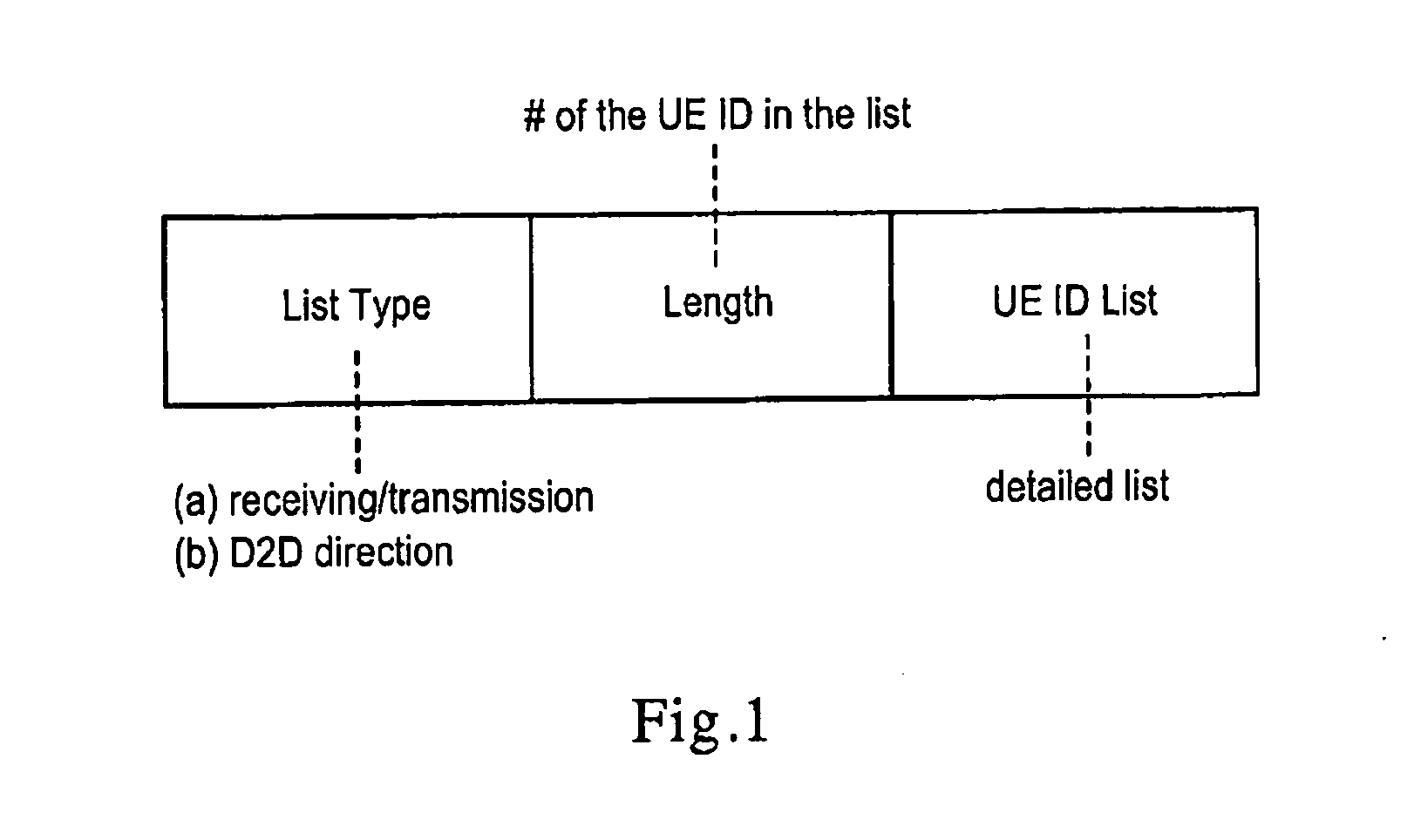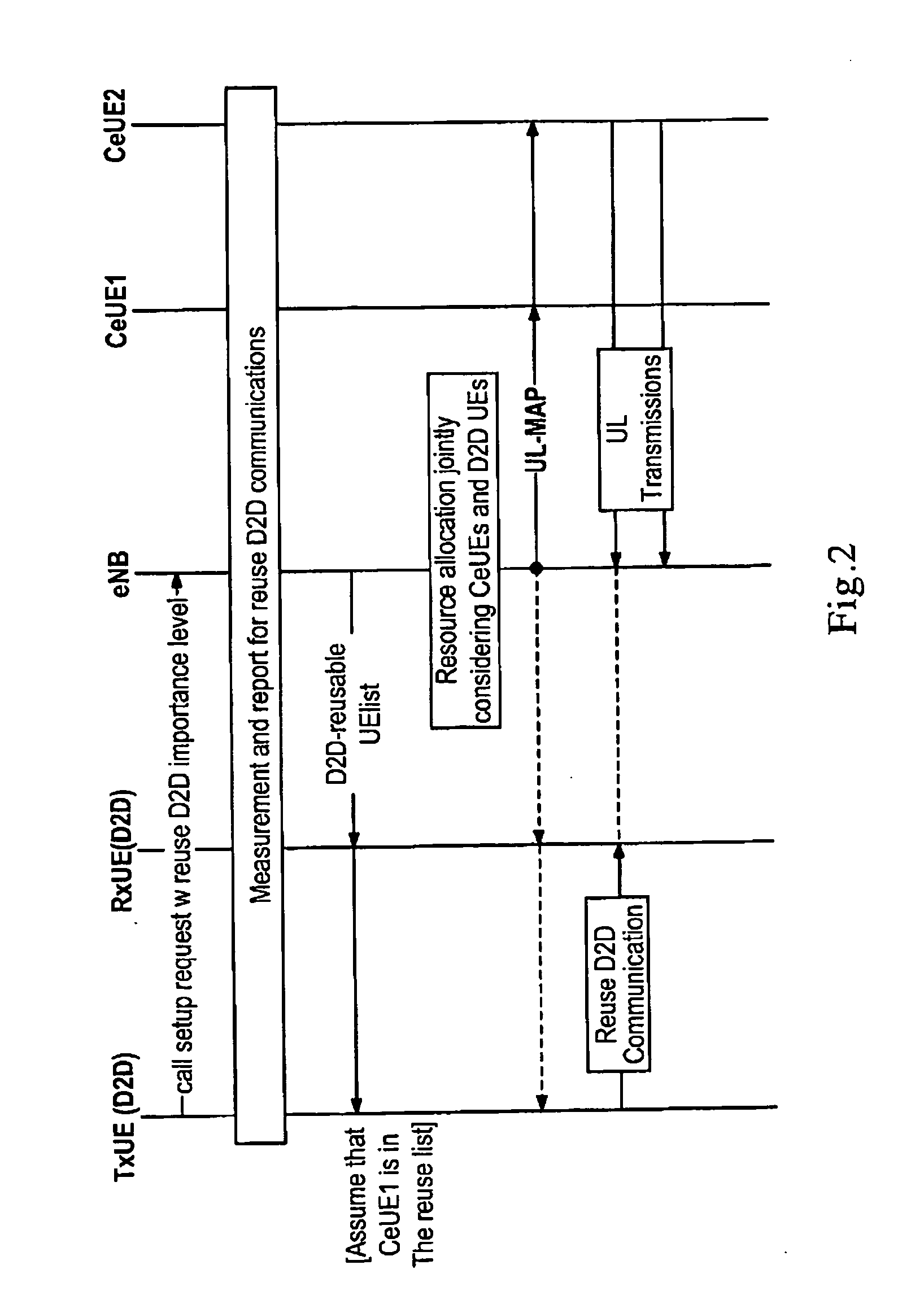Evolved node b controlled centralized resource reuse for device-to-device and cellular users
a node and resource technology, applied in the direction of electrical equipment, wireless communication, connection management, etc., can solve the problems of resource contention, enb cannot consider d2d communications in its radio resource allocation, and reuse-mode d2d can only support a service opportunistically
- Summary
- Abstract
- Description
- Claims
- Application Information
AI Technical Summary
Benefits of technology
Problems solved by technology
Method used
Image
Examples
Embodiment Construction
)
[0024]Device-to-device (D2D) communication may have value for third generation (3G) and beyond-3G communication networks. Reuse-mode D2D, in particular, may enhance such networks.
[0025]For D2D peers close to each other, such a reuse-mode D2D communication method is attractive because a low-power D2D link does not noticeably affect the uplink (UL) operation of concurrent cellular UEs. As the transmission power in short-range D2D communication is very small, the interference from transmitting D2D peer to the eNB can be neglected for purposes of calculation. Consequently, cellular-to-D2D interference is of great interest in D2D.
[0026]When a cellular UE is transmitting traffic to the enhanced Node B (eNB), its assigned radio resource can be reused by a short-range reuse D2D link if the receiving D2D node (generally it is a cellular UE as well, though this is not a requirement) is far away from that transmitting UE. Due to the large distance between them, interference from that cellular...
PUM
 Login to View More
Login to View More Abstract
Description
Claims
Application Information
 Login to View More
Login to View More - R&D
- Intellectual Property
- Life Sciences
- Materials
- Tech Scout
- Unparalleled Data Quality
- Higher Quality Content
- 60% Fewer Hallucinations
Browse by: Latest US Patents, China's latest patents, Technical Efficacy Thesaurus, Application Domain, Technology Topic, Popular Technical Reports.
© 2025 PatSnap. All rights reserved.Legal|Privacy policy|Modern Slavery Act Transparency Statement|Sitemap|About US| Contact US: help@patsnap.com



